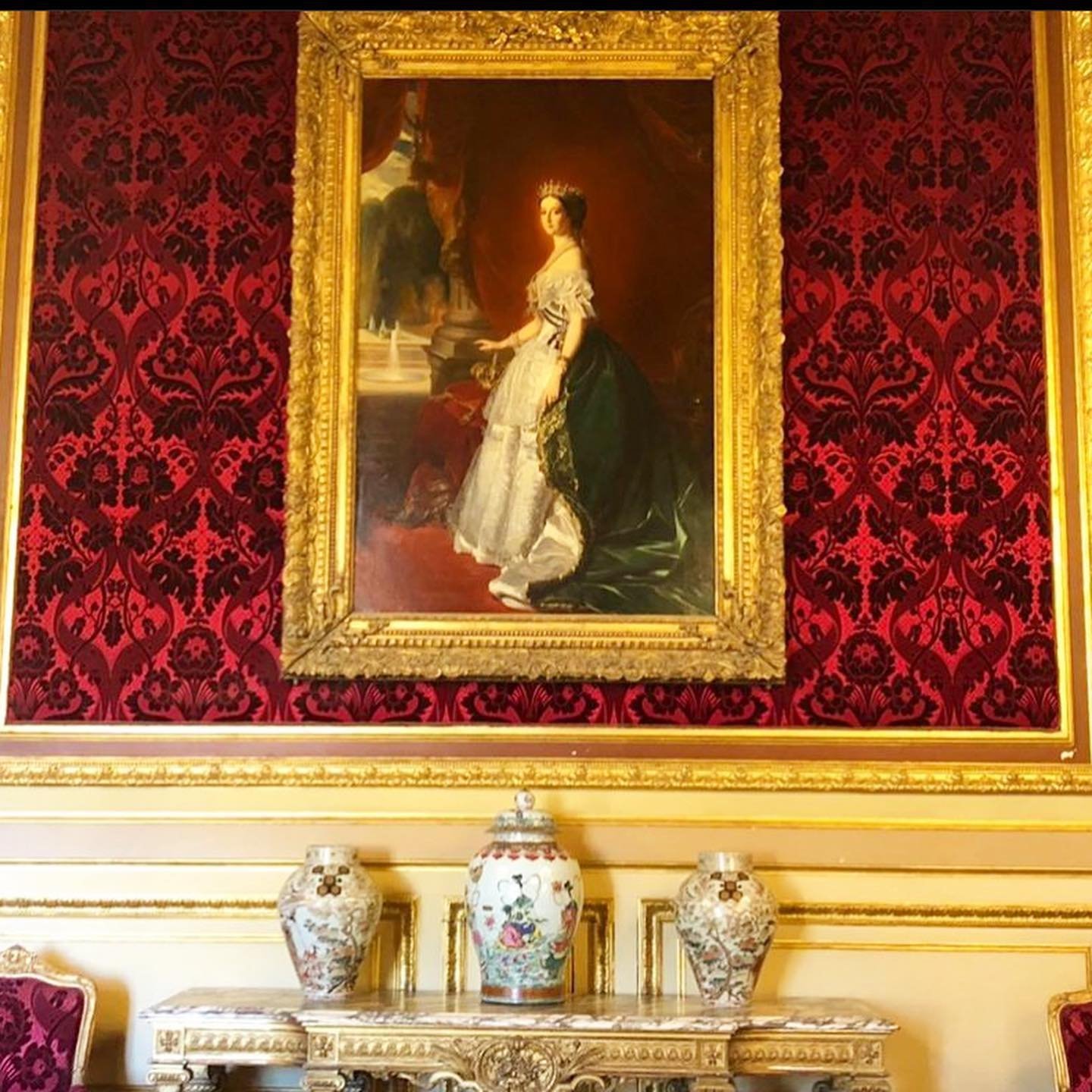Many know the large painting hanging in the Salle Mollien of the Louvre by Théodore Géricault but did you know it was based on a true story? Le Radeau de la Méduse (The Raft of the Medusa) was painted in 1818 when Géricault was 27 years old. It depicts the story of the French ship Medusa, a 40-gun Pallas frigate that was used during the Napoleonic Wars in 1810. On June 17, 1816, the Medusa left the port of Aix alongside three other ships in the fleet; the Loire, Argus, and Echo.
The Medusa captain Viscount Hugues Duroy de Chaumereys decided to make up some time and passed the other ships. A novice captain, Chaumereys hasn't been on a ship in over twenty years and was chosen by Louis XVIII for his dedication to the Bourbons.
On 2 July 1816 the Medusa hit a sandbar on the West African coast at the Banc d’Arguin, 80 km off the Mauritania coast. Following three days of trying to free the Medusa from its captivity in the sand, it was decided that the crew would abandon the ship. Only six small boats were available and would hold only half of its crew and were reserved mostly for the elite and high-ranking officers. A raft was quickly built to hold the heavy items on board. Guns, casks of wine, water, and food tied the raft to the boats but when it was difficult to navigate the captain decided to cut the raft loose. When the raft was set free 147 people clung to the partially submerged makeshift plank.
The worst was to happen with only biscuits, two casks of water, and casks of wine (gotta love the French) and floating under the hot sun. As their raft mates died, they were eaten by the others to survive or pushed into the sea. Many men dived directly into the sea to their death. Thirteen days later on July 17, only fifteen members remained when the Argus spotted them. Five more men died before they reached shore, and only ten men survived the two-week ordeal.
The following February, Chamereys had to face the court and was sentenced to three years in prison. The story captured all of France and when a story was published in November 1817, the young Théodore Géricault was drawn in. The story interviewed two of the servers Henri Savigny and Alexandre Corréard recalling their harrowing tales. Géricault was enthralled and reached out to meet with the two men. With their help, he began to sketch and even make a scale model of the raft and captured the moment that was just two hours before they were saved. They even serve as models for a few of the men in the final painting. So dedicated to getting every detail correct, Géricault spent time at the morgue and even brought body parts from the hospital to his studio to study how the body decays.
Survivor Alexandre Corréard was an engineer and journalist who wrote the eyewitness account of the tragedy and published it. That act had him fired from his job as an engineer which led him to seek a license on September 9, 1818, and open a bookstore at the Palais Royal. He named his shop, Au Naufrage de la Medusa, and people flocked to the store to buy the book and meet the author.
Doctor Henri Savigny, was one of three that volunteered to take the raft. On his arrival in Paris, he testified at the Ministry of the Navy against the captain. When he co-authored the detailed account with Corréard he found instant fame. One other man that was integral to the raft was carpenter Valery Touche-Lavilette. Born on April 26, 1789, he served in the Imperial Guard for two years and was asked to go to Senegal to hope for colonization. It was Valery that help create and build the raft that stayed afloat the entire voyage.
Their eyewitness accounts were the bases of Géricault’s early sketches of the painting. Two of which can be found in the Louvre, show a few slight differences from the final version. The first sketch shows the raft’s position off from the one we know so well. If you look closely at each of the figures you can see how they changed and why I love to find earlier sketches of these monumental works. It’s like getting a glimpse into the artist's mind.
The piece became so large that Géricault had to rent a studio to hold the canvas that was 16 x 23 feet and added to its mystique. A good friend, Eugene Delacroix, paid a visit to the atelier on the Rue Saint Honoré, and after he saw the piece he ran home through the streets amazed and inspired if you look at Liberty Leading the People you see Géricault’s influence in the lower left of the painting.
The large painting perfectly captures the fear and urgency of the effort to survive. When you look at it, it can bring all sorts of emotions. On the lower left side, the older man draped in a red cloth holds his dead son's body at the edge of the raft with a look of total despair. In the foreground, the men look to be barely holding onto life and the raft and ready to be swept to sea from the high waves about to break over them. Géricault added twenty figures when in truth it was fifteen historically at the time. If you look at the man in the bottom right corner, the one with his face down is his dear friend Delacroix.
In the center of the painting, the men have discovered a boat and are pointing it out to the others. At the top of the pyramid, the model discovered a few years ago in the amazing Black Model exhibit at the Musée d'Orsay, is Joseph. Joseph was a stunning model from Santo Domingo that arrived in Paris in 1804. Géricault loved to paint him and used him for three figures and is also the hero of the painting. Raising the red scarf high above him he signals the ship that will eventually save them.
On August 25, 1819, The Raft of the Medusa was presented at the salon under the name Scene of the Shipwreck. Winning the gold medal but being left without a buyer, it was deemed a failure. The painting returned to his studio until the next year when he was paid 20,000 francs to bring it to London in the Egyptian Hall of Piccadilly then it was onto Dublin in 1821.
The Louvre on behalf of the director general Count Auguste de Forbin purchased the painting on November 12, 1824, for 6,000 and since then it has hung in the Louvre. It was saldy 10 months after Gericault died. In 1859 the Louvre ordered a copy that you can see today in Amiens at the Picardy Museum. Pierre Desire Guillemet and Etienne Antoine Ronjat created the copy.
Gericault use a substance called bitumen which made the dark browns and black darker. Bitumen never fully dries and the painting could not be rolled or it would stick to each itself and tear. During the evacuation of the Louvre on September 3, 1939, the large canvas traveled through Versailles on a truck used to move stage scenery. As it went through the town it hit a power line and knocked the power out of the golden town. The Raft was hidden away during the war in the Chateau de Chambord. Since its return in 1945, it has hung on the first floor of the Denon wing in the red room of the Salle Mollien just a few steps from the Mona Lisa. Look at all of the paintings in this room including Delacroix and the other Romantic artists and see the way they each speak to each other.
Théodore Géricault wouldn’t live much longer after he painted his masterpiece. Dying at just 32 years old on January 26, 1824. You can visit his tomb at the Pere Lachaise and find a bronze basrelief of the Raft done by Antoine Étex, but notice that they covered the naked naughty parts of the gentleman falling into the water.
The painting is also a good test of how you see the world. Which parts strike you the most? Are you an optimist or a pessimist? Do you see the hope and elation at the top or is it the despair at the lower portion? Either way, it is a masterpiece and I never get tired of sitting in front of it alone on an early morning before the room is filled or sharing it with clients.























